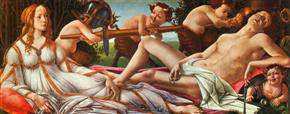
Philips Jones Griffiths
Vietnam, 1967
© The Philips Jones Griffiths Foundation / Magnum Photos
Engaged Observers: Documentary Photography since the Sixties at the Getty Museum On view at the J. Paul Getty Museum, the Getty Center, June 29 – November 14, 2010, EngagedObservers: Documentary Photography since the Sixties looks in depth at projects by a selection of the most vital photographers who have contributed to the development of this documentary approach]]>
Source: Getty Museum
In the decades following World War II, an independently minded andcritically engaged form of photography began to gather momentum. Situated betweenjournalism and art, its practitioners created extended photographic essays that delved deeplyinto topics of social concern and presented distinct personal visions of the world. Passionately committed to their subjects, these photographers have captured both meditative and searing images, from the deep south in the civil rights era to thewar in Iraq in 2006. Their powerful visual reports, often published extensively as books,explore aspects of life that are sometimes difficult and troubling but are worthy of attention
“This exhibition focuses on the tradition of socially engaged photographic essays sincethe 1960s,” explains Brett Abbott, associate curator of photographs and curator of theexhibition. “Working beyond traditional media outlets, these photographers have authoredevocative bodies of work that transcend the realm of traditional photojournalism.”
Engaged Observers is structured around suites of photographs from the followingprojects: “Girl Culture” by Lauren Greenfield, “The Mennonites” by Larry Towell, “Streetwise”by Mary Ellen Mark, “Black in White America” by Leonard Freed, “Nicaragua, June 1978-July1979” by Susan Meiselas, “Vietnam Inc.” by Philip Jones Griffiths, “The Sacrifice” by JamesNachtwey, “Migrations: Humanity in Transition” by Sebastião Salgado, and “Minamata” by W.Eugene and Aileen M. Smith.
Although one does not always associate style with photojournalism, where objectivityand neutrality are traditionally valued, aesthetics have been an important consideration for allof the photographers represented in the exhibition. One of the strengths of this tradition hasbeen its ability to harness artistic decisions in reporting on the world. Meiselas chose colorfilm for her Nicaragua project because she felt it better conveyed the spirit of the revolution asshe experienced it. Salgado noted that the solemn beauty so characteristic of his approach isimportant in conjuring a persistent grace among his migrant subjects, allowing him to presentthem in a dignified way while calling attention to their plight. Nachtwey used tight framing ofmessy conglomerations of tubes, instruments, and arms in The Sacrifice as a way of conjuringthe atmosphere of controlled chaos that he experienced in trauma centers in Iraq. In this kindof work, subject and style, message and delivery, are deliberately intertwined.
All of the photographers in this exhibition use a series of images to address conceptualissues. For instance, Freed was concerned with bridging cultural divides to engender supportof basic civil rights, while Griffiths denounced violent commercialization; Salgado pointed tothe effects of globalization, while the Smiths addressed the related issue of industrialpollution; Meiselas engaged and countered the fragmented process by which we receive newsand understand history, while Towell challenged the meaning of “newsworthy” and explored,as did Greenfield, how cultural values affect life; Nachtwey found the human toll of warunacceptable, and Mark, the idea of homeless street kids in one of the wealthiest nations inthe world.
Follow us on:


